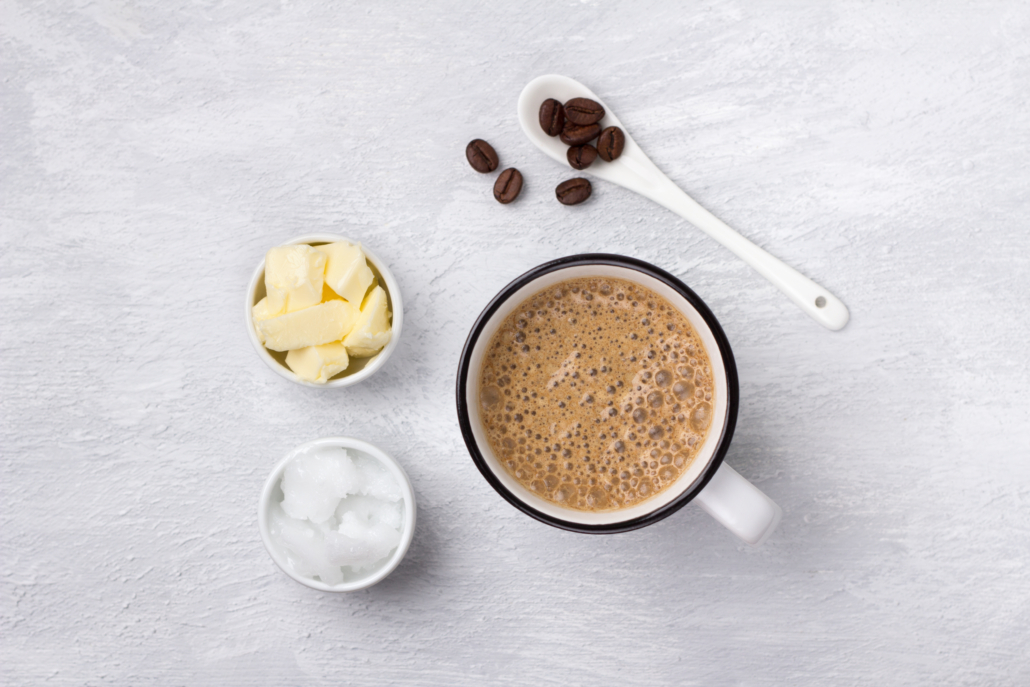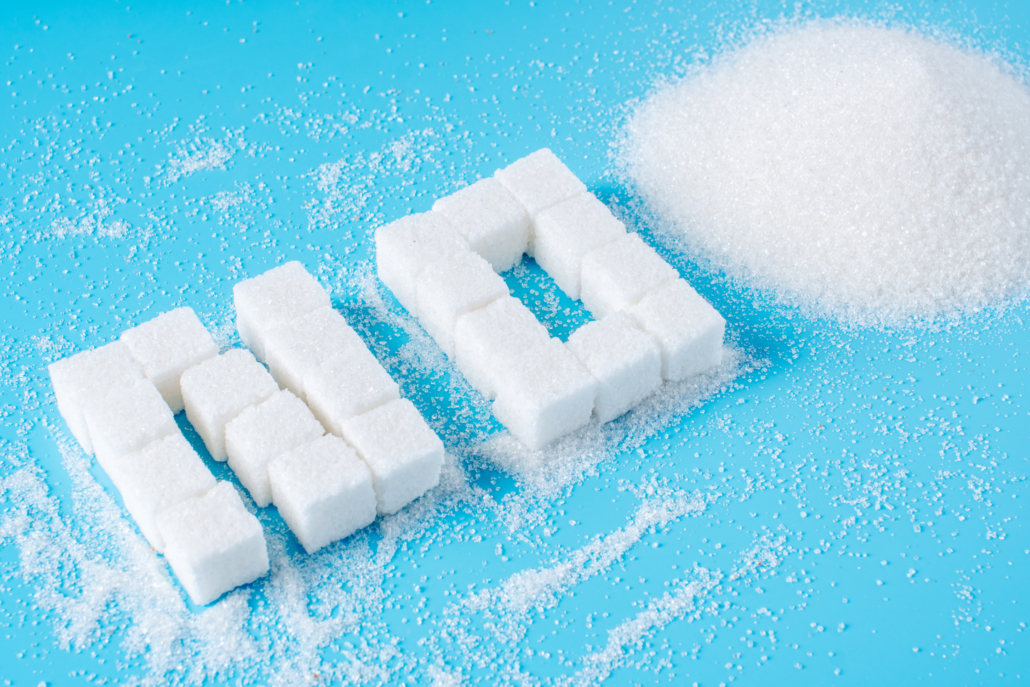We include products in articles we think are useful for our readers. If you buy products or services through links on our website, we may earn a small commission.
Carb Cycling Keto: Everything You Need to Know About Cyclical Ketogenic Diet

A ketogenic diet offers numerous clinically studies benefits, but it’s not a one size fits all approach. The cyclical keto diet– AKA carb cycling keto–may be a good fit for hard-training athletes who need to replenish glycogen stores in their muscles.
Cyclical keto may also be a good option for people on long-term keto experiencing low thyroid and insulin resistance due to prolonged carb restriction.
In this article, we’ll dive deep into the cyclical ketogenic diet to explore its pros, cons, and best practices. We also offer a comprehensive cyclical diet food list.
Table of Contents
What is the Cyclical Ketogenic Diet (CKD)?
The standard ketogenic diet is a consistently high-fat, ultra-low-carb diet. Most ketogenic diet plans call for restricting carbs to 25 grams per day when starting out, and around 60 once you’re adapted. [1]
Restricting carbs switches your body from relying on glucose to converting fatty acids into ketone bodies that are used as a primary fuel for your cells. [2]
When you have high amounts of ketone bodies in your blood, you’re in ketosis.
The cyclical ketogenic diet (CKD) calls for cycling in and out of ketosis while relying on ketones as fuel most of the time.
Most cyclical ketogenic diets involve 6 days of low-carb eating followed by a day or so of higher carb consumption. This high-carb day is referred to as a “refeed” as it restores your body’s glycogen reserves.
Glycogen is a version of carbohydrates that your body stores in your muscles, and it’s used to fuel strenuous activities.
Proponents of the cyclical ketogenic diet claim that it provides all the best benefits of ketosis while avoiding the most common downsides.
Namely, CKD practitioners say that having occasional carbohydrate refeeds boosts muscle growth and enhances exercise performance.
But are these claims actually true? The little research we have available is inconclusive, but many people, especially athletes, report its benefits.
How to Start Carb Cycling Keto
The transition into a cyclical keto diet is virtually identical to the transition into a ‘regular’ keto diet.
In both cases, the first two weeks require keeping carbs low enough to trigger your body to shift into ketosis.
During this transition period you might encounter what keto enthusiasts call ‘keto flu.’ Caused by depleted liver and muscle glycogen levels, keto flu may not be as bad as the real flu, but its symptoms can be uncomfortable and include brain fog, nausea, diarrhea, constipation, and aches and pains.
This in-depth article can help you overcome these keto side effects. And a helpful rule of thumb is to drink lots of water, increase your salt intake, and add bone broth into your diet.
During the first couple of days of keto you may also notice an unusual, almost metallic taste in your mouth. This is actually a sure sign that your body is now in ketosis. As you become better acclimated to using ketones as energy, the metabolic byproducts responsible for this taste become better utilized, and ‘keto breath’ should clear itself up. [3][4]
The Standard Keto Diet vs the Cyclical Keto Diet
While both standard and cyclical ketogenic diets call for the consumption of plenty of animal products, CKD is different from its predecessor in several ways. These differences include:
Difference #1: More Freedom with Fruit
Conventional keto’s 25-60 gram/day carbohydrate limit inherently limits fruit consumption.
When carb cycling keto, however, fruit of all types can be enjoyed freely — at the appropriate times.
In addition to being tasty, fruit’s fructose content makes it the perfect candidate for restoring liver glycogen and boosting metabolism. [5]
Difference #2: Improved thyroid function
A growing number of Americans may be at risk of subclinical hypothyroidism and other thyroid-related problems. [6]
For some of these people, going entirely carb-free can make underlying problems even worse. That’s because thyroid hormone levels and liver glycogen levels are closely tied. [7]
There is an evolutionary reason for this link one: sugar consumption signals to your body that you’re in a carbohydrate-rich environment, teeming with fruits and wild animals alike. Conversely, going for prolonged periods of time without any carbs may signal to your body that you’re in a low-energy environment where you need to conserve.
Difference #3: Improved Blood Sugar
People’s bodies respond differently to carb restriction. Though keto can increase insulin sensitivity in most people, it can also trigger the body to conserve carbs in the blood by causing a state called physiological insulin resistance. This type of insulin resistance, unlike the one seen in diabetic patients, is easily reversible, but it’s still not ideal.) [8]
When insulin resistance goes up, so does blood sugar. Another term for this type of insulin resistance is “fasting hyperglycemia.”
Perhaps it’s not surprising that some people who’ve followed the conventional keto diet for long periods of time — particularly keto athletes who deplete their glycogen stores — experience chronically high blood sugar. [9][10] These groups may do well to include some occasional carb refeeds into their routine.
Benefits of Carb Cycling Keto
Now that we’ve looked at some of the biggest differences between conventional keto and carb cycling keto, let’s hone in on CKD’s top benefits.
Benefit #1: Enhanced Exercise
Sports scientists have believed in the exercise-enhancing qualities of carbohydrates for decades, though the truth about carbs and exercise a lot more nuanced than that. Carbs benefit some types of athletics more than others.
Carb-dependent Exercise
Athletes whose activities last from 2 minutes to 2 hours may require the greatest amount of carbohydrates. That’s because activities in this timeframe are almost entirely glycolytic; they’re too long to rely on stored ATP-PC, yet too short to rely on stored triglycerides (fat). [11]
Endurance athletes like cyclists and marathon runners practically need to burn carbohydrates to maximize their performance. In other words, the cyclical keto diet might be the best option for them. CKD’s occasional carb refeeds allow endurance athletes to ‘race high and train low.’
Keto-boosted Exercise
The story is different for strength athletes and ultra-endurance athletes, however. Strength training relies so heavily on the phosphocreatine system to produce short bursts of ATP that carb intake might not even matter.
Studies show that even a pure keto diet can improve strength and testosterone production in trained men. [12]
Ultra-endurance athletes may also thrive on conventional keto. Becoming keto-adapted actually helps the ultra-endurance athlete reach one of their most coveted goals: becoming ‘bonk-proof.’
Bonking is the word endurance athletes use to describe the point when your body uses up it’s glycogen stores, and switches to breaking down fat. For an athlete who is not keto-adapted, this means major physical struggle. But for an athlete whose body is adapted to CKD, the transition is easier. And there are already higher levels of ketones in the blood.
Ketones are a decidedly cleaner-burning fuel source than carbs when it comes to slow, steady energy production. [13] Ultra-endurance events are far too long to be sustained by the body’s glycogen (carbohydrate) stores alone.
Benefit #2: Weight Management
The cyclical keto diet also shines when it comes to weight loss. That’s because its occasional carb refeeds regulate weight loss hormones.
At first glance, the idea that carbs might speed weight loss seems counterintuitive. Aren’t processed carbs responsible for the rampant obesity rates we’re currently seeing in the western world?
Well, yes. But something almost magical happens when carbs are reintroduced to the diet of someone who’s become adapted to burning fat as fuel.
And this magic happens through one of the most important weight loss hormones called leptin.
Leptin controls hunger, satiety, and many other aspects of your metabolism. Most people who try to lose weight are limited by their body’s leptin sensitivity. Their fat cells have become leptin resistant enough to believe that they’re starving, even in a land of plenty. [14]
Leptin is the primary hormone responsible for your bodyweight ‘set point.’ A naturally thin person likely has high leptin sensitivity, while a larger person likely has high leptin resistance. [15]
Even people who diet the right way — with keto — sometimes run into problems with their leptin levels getting too low. When leptin goes down, the hunger hormone called grehlin goes up, resulting in irresistible hunger.
The solution might involve a carb refeed. Leptin responds to carbohydrate intake better than it does to any other macronutrient. The occasional carbohydrate-rich meal might pulse your body’s leptin levels just enough to help you break through a weight loss plateau. [16]
It’s worth noting that thin individuals seem to benefit from leptin-boosting refeeds more than others, so you might consider waiting until you are close to your weight loss goals before reintroducing carbs.
Benefit #3: Better Gut Health
The cyclical keto diet may also be a great choice for your gut health. The low-carb days can feature plenty of gut-friendly butyric acid found in butter or ghee.
While high-carb days can trigger butyrate production when specialized microbes ferment dietary fiber from low-toxin veggies. [17]
Whether or not dietary fiber is beneficial for you will depend on your gut health. People with healthy guts may benefit from the fiber found in potatoes, mushrooms, or carrots. People with leaky gut syndrome or IBS, on the other hand, tend to do best going completely fiber-free. [18]
Benefit #4: Metabolic Flexibility
Of all the carb cycling keto benefits, this might be the biggest one: Cycling in and out of ketosis enables a unique metabolic flexibility.
Varying your carb intake depending on the day, week, or your activity level may be the best way to keep your body sensitive to insulin, leptin, and other important hormones.
Benefit #5: Dietary Freedom
The near-complete carbohydrate avoidance of a conventional keto diet can feel restrictive and make it difficult for people to maintain a keto lifestyle.
The cyclical keto diet provides a way out of this emotional deprivation predicament by allowing you to eat carbs to your heart’s content — once or twice a week. Taking these occasional refeeds might be the best way to stick with low-carb eating in the long run.
Carb refeeds: The Stats
Most carb cycling keto experts recommend a weekly carbohydrate refeed that lasts between 24 and 48 hours from the time of initial carb consumption. During your refeed, it’s important to keep fat intake relatively low, as any excess fat will be immediately stored in the presence of high insulin triggered by your carb intake.
If you track your macros during this refeed period, they should look something like this:
- 60-70% carbohydrates
- 15-20% protein
- 15-20% fat
What to eat During a Refeed
Some people tend to gorge on pop-tarts and fast food. But if your goal with a CKD is to improve your overall health and athletic performance through dietary choices, you’ll want to avoid foods loaded with inflammatory vegetable oils and hydrogenated fats.
When it comes to carbs, opt for whole foods like fruit, honey, and chocolate. If you’re going to eat grains, prepare them in ways to reduce antinutrients and plant toxins.
How to Get Back Into Ketosis After a Refeed
Once that 24-48 hour period is up, you’ll need to deplete your muscles and liver of stored glycogen before you can get back into ketosis. Interestingly, plenty of anecdotal reports say this process becomes faster and easier over time.
Here’s how the transition is done:
- Stop eating by 7 pm or sunset, whichever happens last
- Drink a caffeinated beverage like coffee or tea the next morning, then do some endurance exercise
- Consider supplementing with MCT oil or coconut oil throughout your first day low-carb
By day two of your low-carb plan, you should be back in ketosis. You will also likely have dropped back to your ‘true’ weight— or maybe even a few pounds lighter than you were before you began the refeed. That’s the power of leptin optimization.
Cyclical Keto Food List
You can optimize your CKD by fueling your body with high-fat low-carb superfoods, like grass-fed meats, oysters, salmon roe, full-fat dairy keto yogurt, butter, and keto cheese, while filling the gaps with wholesome keto snacks.
For people practicing mediterranean keto, vegetarian keto, or vegan keto, low-carb veggies and keto nuts are in store.
The following CKD foods list will steer you in the right direction:
| Ruminants | Pork | Poultry | fish | seafood | Organ meats | Wild meats | fat | Eggs | Dairy | Fruits and Veggies |
| Beef Bison Goat Lamb | All types | Chicken Duck Goose Game hen Turkey Qual Pheasant | Salmon Halibut Mahi-mahi Trout Tuna Cod Arctic Char Sardines Anchovies Mackerel Herring swordfish Snapper Walleye | Oysters Shrimp Prawns Lobster Mussels Scallops Crab Clams | Liver Heart Brain Kidney Sweet- Breads Pancreas Tongue Tripe Bone Marrow Testicles | Elk Venison Antelope Bear Rabbit Boar Rattlesnake Kangaroo | Tallow Lard Butter Ghee | Chicken eggs Duck eggs Goose Eggs Ostrich eggs Quail Eggs | Butter Ghee Cream Creme Fraiche Cheese Full-fat yogurt | Blackberries Strawberries Sweet potato Russet Potato Cantaloupe Watermelon Kiwi Asparagus Kale Cauliflower Avocado Coconut |
Cyclical Keto Diet: The Takeaway
Is the cyclical keto diet right for you?
That depends on several things, including your current health status, health goals, and athletic demands.
On one hand, if you’re doing great on a standard ketogenic diet, there’s no reason to change course.
But if you are experiencing elevated blood sugar and reduced insulin sensitivity, low thyroid, or you’re a hard-training athlete, CKD may be the right option for you.
















